Asus looks to rattle Steam Deck’s position with its entry to the handheld gaming PC with ROG Ally!
Asus announced ROG Ally first as an April Fool joke, but the company fooled everyone by announcing that the device is real and is launching soon.
Asus ROG Ally is not only Asus’ but also the first hand at the handheld gaming PC market by a legacy laptop maker. There have been various attempts at
The handheld gaming PC market came alive after Valve launched its gaming handheld, Steam Deck. Steam Deck was launched last year and has gone. Steam Deck is now reported to pass 3 million units in sales this year.
ROG Ally vs Steam Deck

With ROG Ally, Asus is going straight up against Steam Deck. While many didn’t think Asus would be pricing it competitively against Steam Deck, the latest leaks show the 512GB variant of ROG Ally just costs $50 more than Steam Deck’s 512GB variant.
In this article, let us compare ROG Ally and Steam Deck and find out which is better!
Design
Both ROG Ally and Steam Deck feature similar design language, a common trait with all handheld gaming PCs. Both have a central screen, controls on the side, and shoulder triggers on the top.
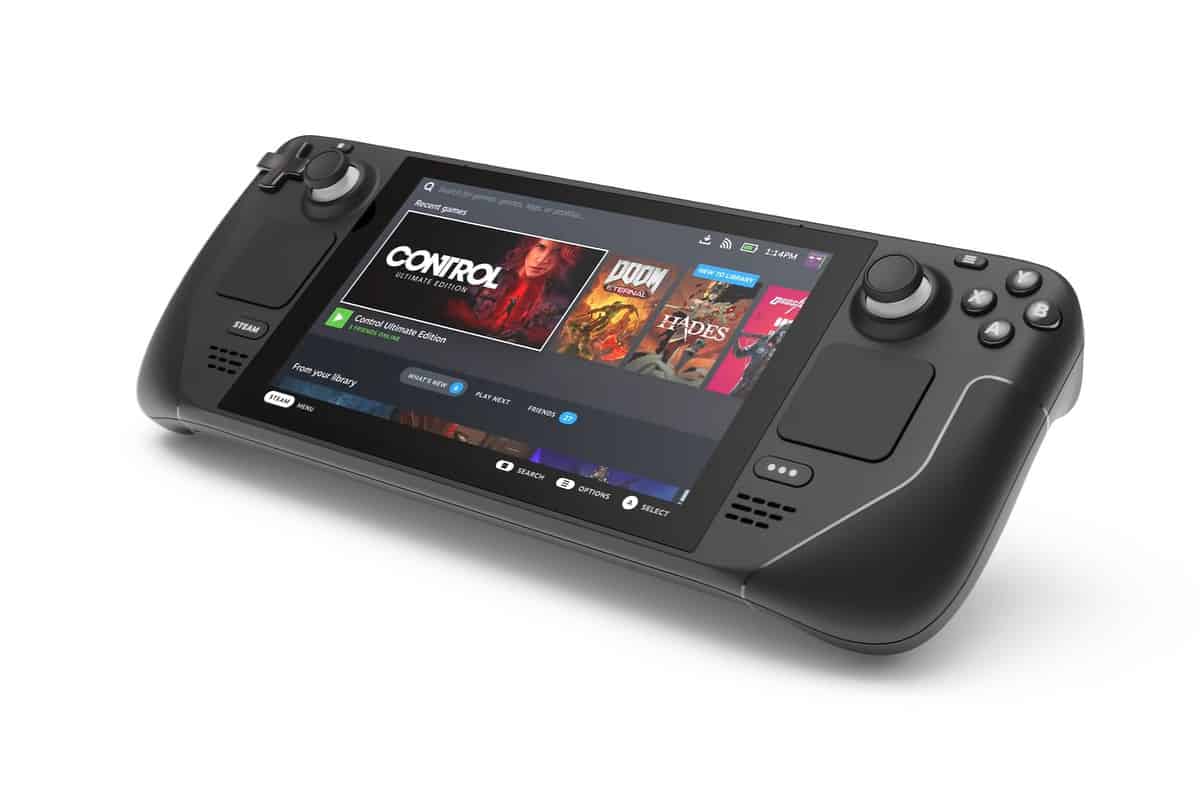
Steam Deck is wider; the button alignments follow the PlayStation format and are aligned almost in the same line. On the left, we get a D-Pad and a joystick; on the right, we have a joystick and X-Y-A-B buttons. There are two track pads on either side of the device as well. It also has four function buttons and a front-facing speaker.
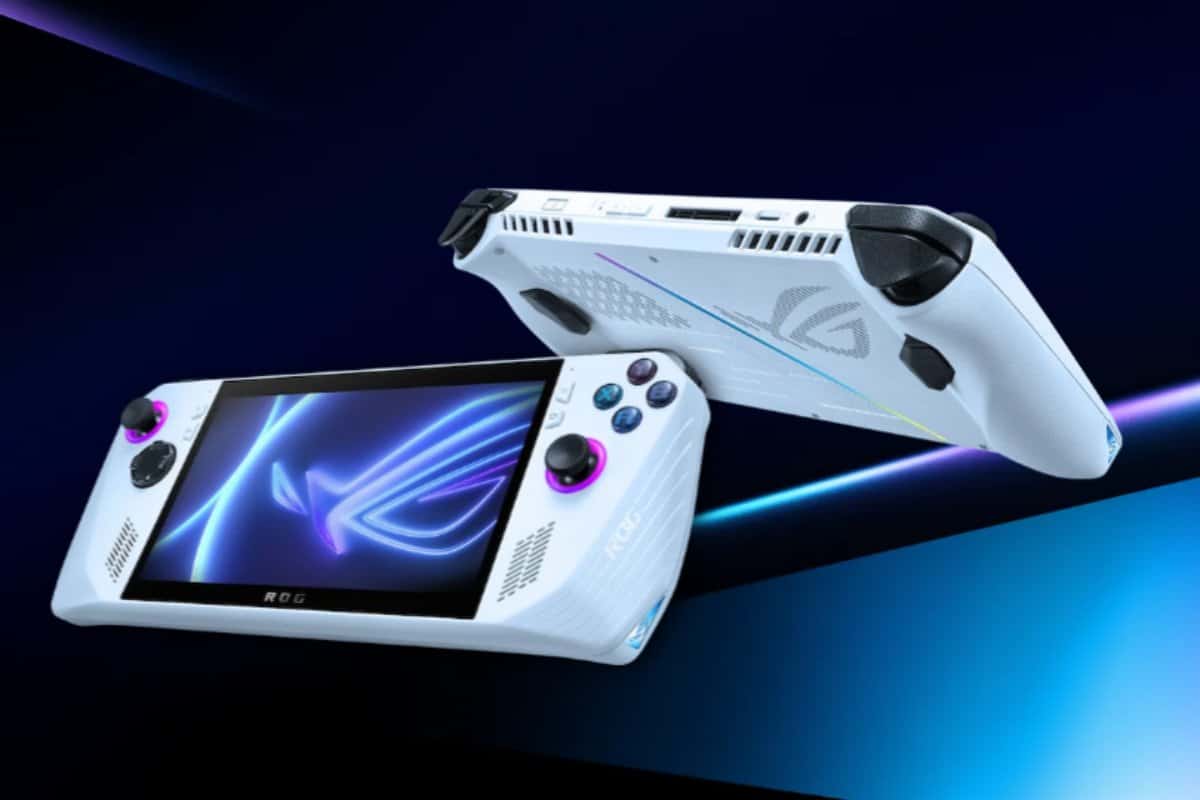
ROG Ally is smaller than Steam Deck but still has the same display size. Ally does it by aligning the controls more or less like an Xbox controller; it also follows the Xbox controller format. On the left, you get a joystick and D-Pad; on the right, there is a joystick and X-Y-A-B controls. ROG Ally is more rectangular and doesn’t have as much of an ergonomic grip as the Steam Deck.
Steam Deck and ROG Ally have microSD card support, a headphone jack and a Type C port. ROG Ally also has an extra port for docking to Asus’ external GPU, the ROG XG Mobile, which hooks up Ally with the power of Nvidia GeForce RTX 4090.
Display
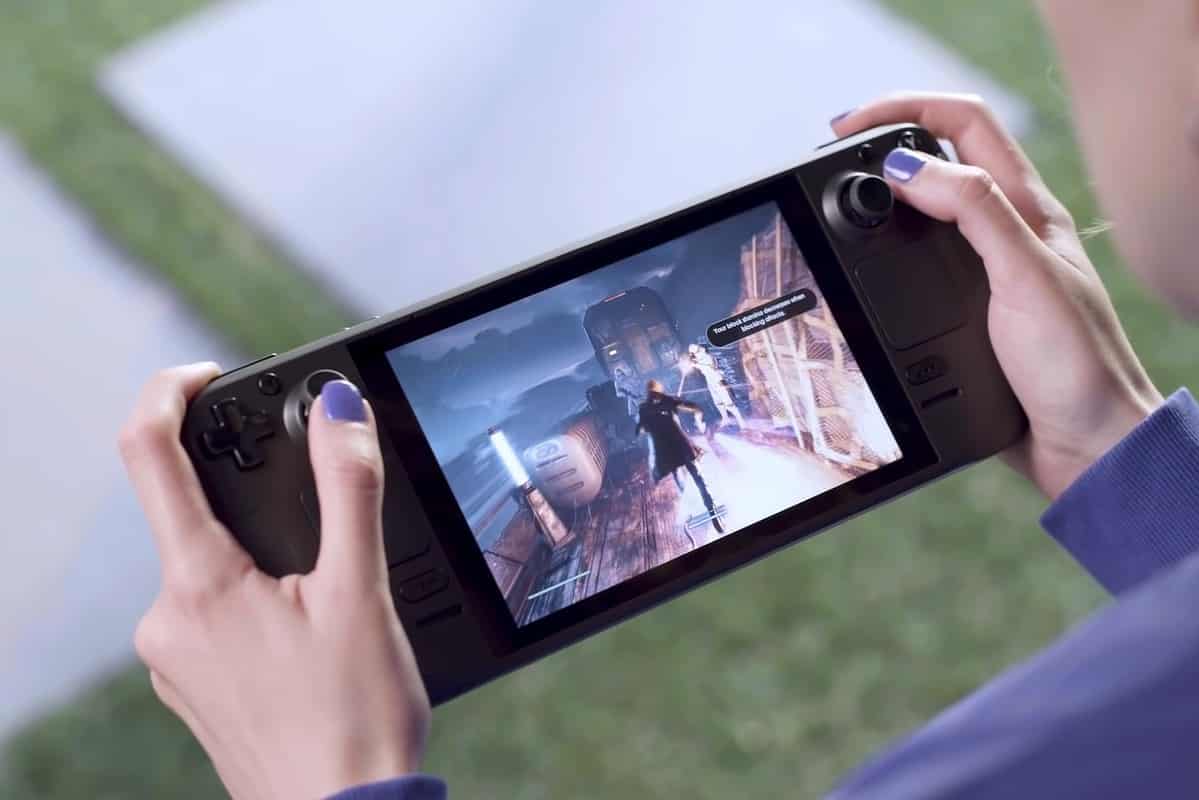
Asus ROG Ally and Steam Deck both use 7-inch IPS LCDs, but Ally’s display is superior. Steam Deck has a resolution of 1280 x 800 pixels, while ROG Ally has a higher resolution of 1920 x 1080 pixels.

ROG Ally brings a higher refresh rate of 120Hz, while Steam Deck is limited to 60Hz. The display on ROG Ally also has a higher peak brightness of 500 nits compared to the 400 nits peak brightness in Steam Deck.
Performance
Asus ROG Ally is more powerful than Steam Deck. Steam Deck came out in the first half of 2022 and has been developing for a long time. Valve revealed the Steam Deck on July 2021, so you know it was in development for some time before that. Steam Deck uses a semi-custom AMD APU code named “Aerith”, which uses an AMD Zen 2 CPU and an AMD RDNA 2 GPU.
ROG Ally uses Ryzen Z1 series processors from AMD – Ryzen Z1 Extreme and Ryzen Z1, depending on the variant. The Ryzen Z1 Extreme uses an 8-core AMD Zen 4 CPU, paired with 12 AMD RDNA 3 compute units for graphics, while Ryzen Z1 uses a 6-core AMD Zen 4 CPU and 4 AMD RDNA 3 compute units. Here’s everything you need to know about the ROG Ally processor.
Both ROG Ally and Steam Deck feature 16GB LPDDR5 RAM. ROG Ally features PCIe 4.0 SSD for its variants, Steam Deck, on the other hand, uses PCIe 3.0 storage for the 256GB and 512GB variants, while it is limited to eMMC storage for the 64GB variant, which is much slower than the SSDs. Both devices feature microSD card slots for additional storage expansion as well.
Software
ROG Ally uses Windows 11 operating system, while Steam Deck uses Valve’s custom Linux distribution, SteamOS 3.0.
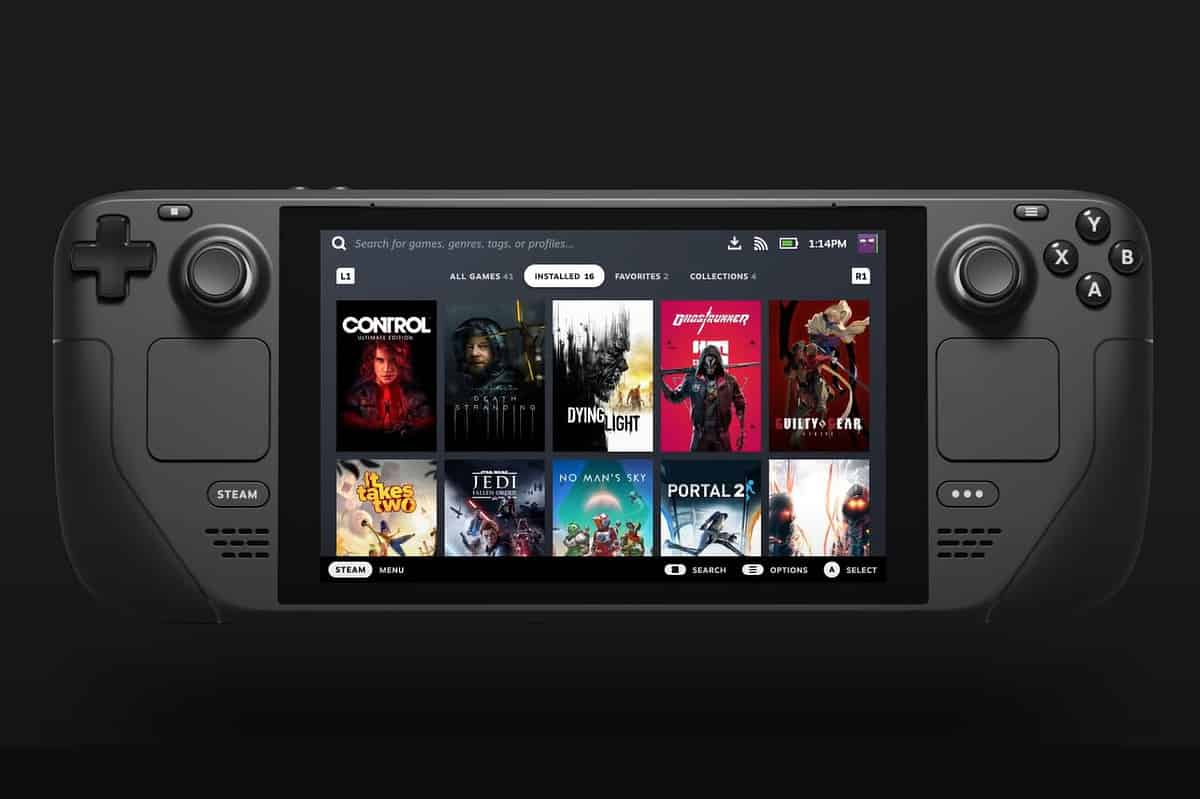
Steam Deck stands out among other gaming PC handhelds by using its custom operating system, SteamOS. Because of it, you’re locked down to the Steam store for games, and all the games you previously purchased from Steam will be available for you to play in Steam Deck. Steam Deck also offers an easy-to-use and streamlined UI specifically designed for a handheld gaming experience, which many gaming handhelds need to improve.
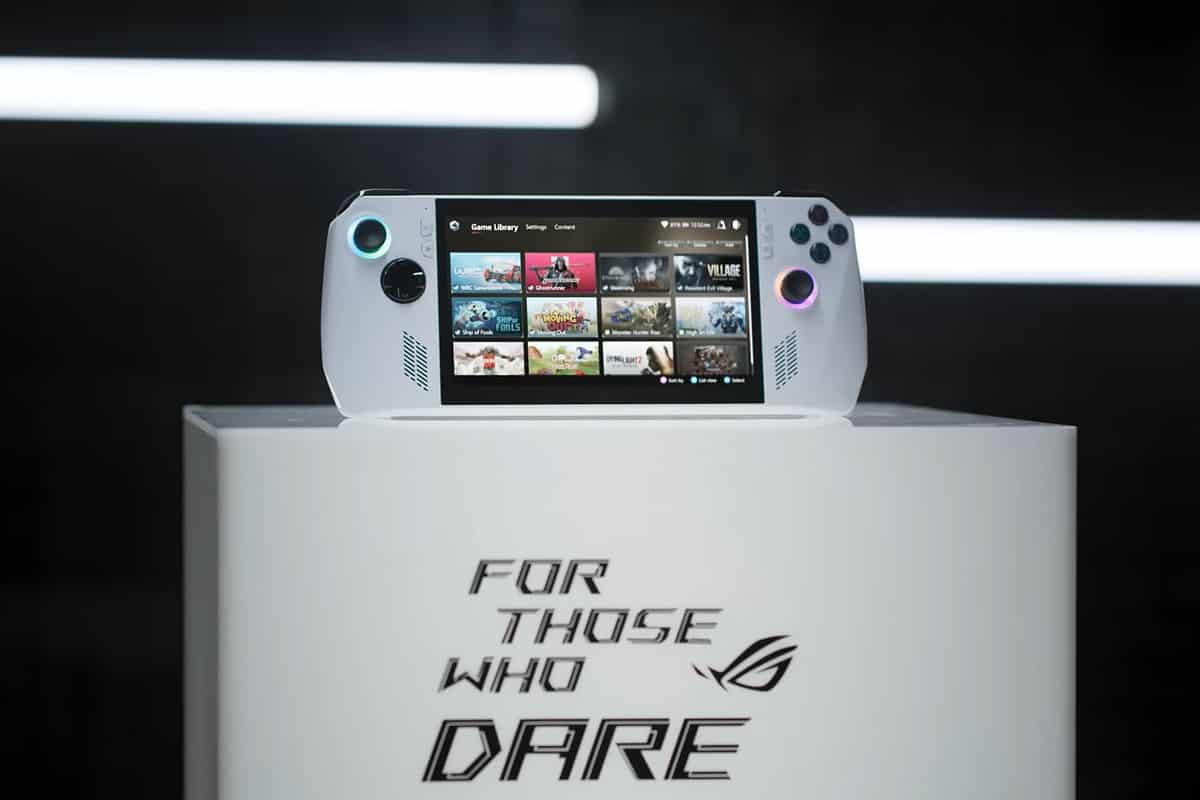
Windows 11, as we know it, is the most versatile operating system for gaming. It is the primary OS used by gamers worldwide and brings support for game stores such as Xbox Store, Steam, Epic Games Store, Battle.net, GOG and many more. Windows 11 also means you can play games not supported in Steam Deck, such as competitive games, which require anti-cheat software to run. Asus also bundles its Armoury Crate software with Ally, which brings a handheld-specific UI for all your games from all the stores, which the software will curate for you in a single window once you have installed the games from various stores. It also allows you to customize performance modes, cooling profiles, key mapping, aura sync and more. You can also jump straight into Armoury Crate using its dedicated button.
Battery
Steam Deck comes with a 5,200mAh battery, lasting up to 2 to 7 hours, depending on the game’s demands. Asus claims ROG Ally lasts up to 8 hours, but we can expect it to last similarly to Steam Deck or even slightly worse because of a more demanding chipset and display.
Asus ROG Ally vs Steam Deck: Spec Sheet Comparison
| Specification | ROG Ally | Steam Deck |
|---|---|---|
| Dimensions | 280 x 113 x 39 mm | 298 x 117 x 49mm |
| Weight | 608g | 669g |
| Build | Plastic | Plastic |
| Display size | 7-inch | 7-inch |
| Display type | IPS | IPS |
| Resolution | 1920 x 1080 pixels | 1920 x 1080 pixels |
| Refresh rate | 120Hz | 60Hz |
| Processor | AMD Ryzen Z1 AMD Ryzen Z1 Extreme | Aerith |
| CPU | 6 core AMD Zen 4 8 core AMD Zen 4 | 4 core AMD Zen 2 |
| GPU | 4 AMD RDNA 3 compute units 12 AMD RDNA 3 compute units | AMD RDNA 2 |
| RAM | 12GB, 16GB | 8GB, 12GB, 16GB |
| Storage | 256GB, 512GB, 1TB | 256GB, 512GB, 1TB |
| Battery capacity | 5000 mAh | 5000 mAh |
| Operating system | Android 13, MIUI 14 | Android 13, One UI 5.1 |
| Price | – | Starting $399/€419/£349 |
Price & Availability
Steam Deck Price:
- 64 GB variant: $399/€419/£349
- 256 GB variant: $529/€549/£459
- 512 GB variant: $649/€679/£569
Asus is yet to reveal the prices of ROG Ally. But Rumours suggest that the 512Gb variant could be priced at $699.
Conclusion
Much handheld gaming PCs, such as the ones from Ayaneo and Onexplayer, had launched recently. But none has come close to making a dent in Steam Deck. The primary reason for that is the price. The Ayaneos and Onexplayers cost above $1,000 and are no match for the starting price of $399.
ROG Ally might not start at $400 when it launches for the lowest variant, but it can come close to Steam Deck for the 256GB and 512GB variants.
Finally, we have a competitor to Steam Deck. At the price Asus asks, ROG Ally offers more performance than Steam Deck. It also has a much better screen, at least on paper. Also, with Windows 11 instead of SteamOS, you can play any games you want from any game store, such as Xbox Game Pass, Epic Games Store, Battle.net, and Steam Store. Also, Ally won’t stop you from playing competitive games that use anti-cheat programs.
Asus ROG Ally offers so much more compared to Steam Deck for a slightly higher price. But if you want the absolute best value for money, Steam Deck is the one to go. It also helps that Steam Deck has a 64GB variant priced as low as $399/€419/£349.

